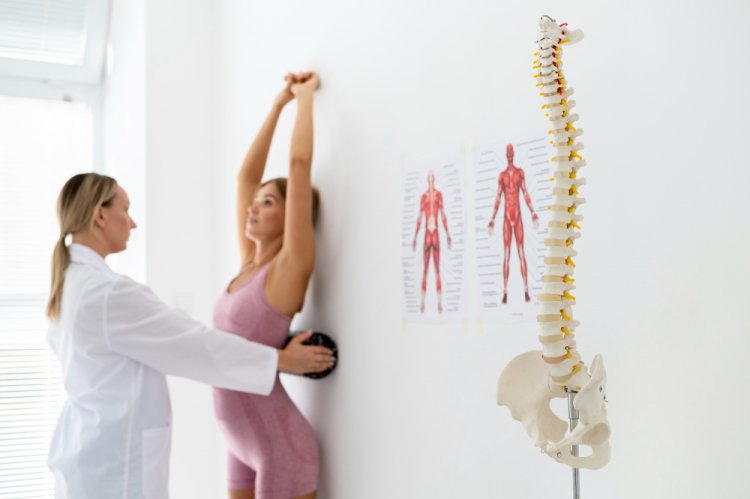Comprehensive Guide to Herniated Discs: Causes, Symptoms, Diagnosis, and Treatment Options
Herniated discs, also referred to as slipped discs or ruptured discs, represent a common yet often debilitating condition affecting the spine. This article aims to provide an in-depth exploration of herniated discs, covering their anatomical basis, diverse etiology, symptomatic presentations, diagnostic modalities, and a comprehensive overview of available treatment strategies.

Anatomy of the Spine
The spinal column comprises a complex arrangement of vertebrae stacked in a columnar fashion, housing and protecting the delicate spinal cord. Intervertebral discs, acting as shock absorbers and facilitating spinal movement, are located between adjacent vertebrae. Each disc consists of a fibrous outer layer called the annulus fibrosus and a gel-like inner core known as the nucleus pulposus.
Etiology of Herniated Discs
Several factors contribute to the development of herniated discs, including:
-
Degenerative Changes: Progressive wear and tear associated with aging can lead to the gradual deterioration of spinal discs, making them more susceptible to herniation.
-
Trauma: Acute injuries such as falls, accidents, or sudden impacts can precipitate disc herniation by exerting excessive force on the spine.
-
Occupational Hazards: Individuals engaged in occupations involving heavy lifting, repetitive motions, or prolonged sitting may be at an increased risk of developing herniated discs.
-
Genetic Predisposition: Genetic factors can influence the structural integrity of spinal discs, rendering some individuals more prone to herniation than others.
Clinical Manifestations
The presentation of herniated discs varies widely depending on the location and extent of the herniation. Common symptoms include:
-
Localized Pain: Patients often experience sharp, stabbing pain in the affected region of the spine, which may radiate to the buttocks, thighs, or arms, following the path of the affected nerve roots.
-
Neurological Deficits: Pressure on spinal nerves can lead to sensory disturbances such as numbness, tingling, or burning sensations, as well as motor deficits including weakness, clumsiness, or loss of reflexes.
-
Functional Impairments: Severe cases of disc herniation may result in significant limitations in mobility, posture, and activities of daily living, adversely impacting the quality of life.
Diagnostic Workup
Accurate diagnosis of herniated discs typically involves a comprehensive assessment encompassing:
-
Clinical History: A detailed review of the patient's medical history, including the onset and progression of symptoms, precipitating factors, and previous treatment interventions.
-
Physical Examination: Thorough neurological and musculoskeletal examinations aimed at identifying specific signs indicative of disc herniation, such as reduced range of motion, muscle weakness, or sensory deficits.
-
Advanced Imaging: Modalities such as MRI (Magnetic Resonance Imaging) and CT (Computed Tomography) scans provide detailed visualization of spinal structures, facilitating the localization and characterization of herniated discs.
Therapeutic Interventions
Treatment strategies for herniated discs are tailored to individual patient needs and may include:
-
Conservative Management: Non-invasive approaches such as rest, physical therapy, chiropractic care, and pharmacotherapy (e.g., nonsteroidal anti-inflammatory drugs, muscle relaxants) are often employed to alleviate pain, improve spinal mobility, and enhance functional outcomes.
-
Interventional Procedures: In cases of persistent or severe symptoms, minimally invasive interventions such as epidural steroid injections or nerve root blocks may be administered to alleviate pain and inflammation, providing temporary relief.
-
Surgical Options: When conservative measures fail to yield satisfactory outcomes or in the presence of progressive neurological deficits, surgical intervention may be indicated. Procedures such as microdiscectomy, laminectomy, or spinal fusion aim to decompress neural structures, stabilize the spine, and restore functional integrity.
Preventive Strategies
While herniated discs cannot always be prevented, adopting certain preventive measures can mitigate the risk of occurrence, including:
-
Ergonomic Modifications: Implementing ergonomic principles in the workplace and daily activities, such as maintaining proper posture, utilizing assistive devices for lifting, and incorporating regular breaks, can reduce spinal strain and minimize the risk of disc herniation.
-
Lifestyle Modifications: Engaging in regular exercise programs focusing on core strengthening, flexibility, and cardiovascular fitness can enhance spinal health and resilience, reducing the likelihood of disc degeneration and herniation.
-
Weight Management: Maintaining a healthy body weight through balanced nutrition and regular physical activity helps alleviate excess pressure on spinal structures, promoting spinal alignment and reducing the risk of disc herniation.
In conclusion, herniated discs represent a multifaceted clinical entity characterized by a spectrum of symptoms ranging from localized pain to neurological deficits. Through a comprehensive understanding of the anatomical basis, etiological factors, clinical manifestations, diagnostic modalities, and therapeutic interventions associated with herniated discs, healthcare providers can effectively manage this common spinal disorder, improving patient outcomes and restoring functional well-being.
#HerniatedDiscs #SpinalHealth #BackPainRelief #NeurologicalHealth #PhysicalTherapy #ChiropracticCare #PainManagement #SpinalRehabilitation #HealthySpine #ErgonomicLiving #PreventiveHealth #OrthopedicCare #FunctionalWellBeing #MusculoskeletalHealth #PainFreeLiving
Disclaimer:
The information provided in this article is for educational purposes only and should not be considered medical advice. If you have any health concerns or are experiencing symptoms, it is important to consult with a healthcare professional, such as a doctor or clinic, for proper diagnosis and treatment. Always seek the advice of your doctor or other qualified health provider with any questions you may have regarding a medical condition. Do not disregard professional medical advice or delay in seeking it because of something you have read in this article.
What's Your Reaction?





















